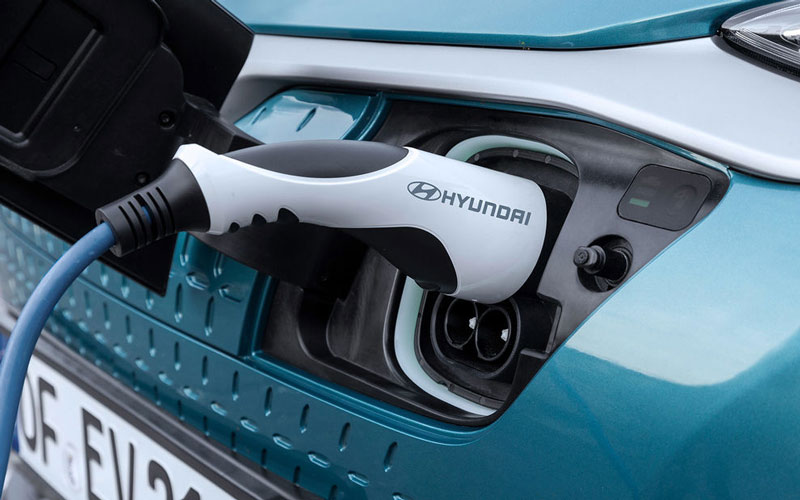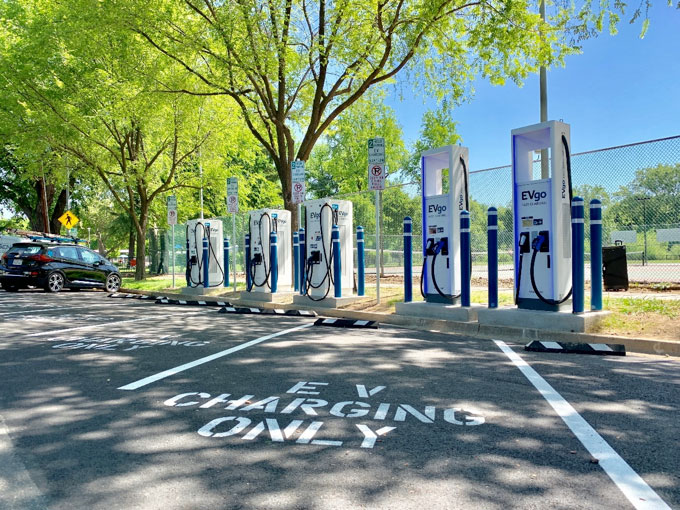When you own an electric car, there will be the necessity to charge it. When you're new to this it sounds like a very scary thing to do. Once you have a little bit of experience with it, it becomes something you don't think about any more.
 There is usually three ways to charge your car. They are sometimes referred to as Level 1, 2 and 3 charging. Technically speaking there is only two ways to charge your car. With AC (alternating current) typically available at your home and also referred to as EVSEs (electric vehicle supply equipment). Or DC (direct current) also known as Fast Charging.
There is usually three ways to charge your car. They are sometimes referred to as Level 1, 2 and 3 charging. Technically speaking there is only two ways to charge your car. With AC (alternating current) typically available at your home and also referred to as EVSEs (electric vehicle supply equipment). Or DC (direct current) also known as Fast Charging.
So let's start small/slow and work our way up.
Level 1 Charging
Level 1 charging, or AC (slow) charging is typically supplied with the car. It is basically an extension cord that you plug into your home outlet in or near the garage and into your car. It will use the 120V or (240V in Europe) to charge your car slowly. That way it is usable pretty much everywhere and at any time.
Depending on the battery size of the car (we are assuming a long-range capable car here) and the Voltage it will take about 20 to 40 hours to charge a car from almost empty to almost full.
Level 2 Charging
Level 2 charging would be a fixed installed charger in your garage. The same chargers can also be found in public parking garages or parking lots, around hotels and businesses. They are typically the size of a shoe box and most of them have a cable attached to it that will be plugged into your car. The public ones are sometimes installed on a pedestal. These units use 240V and a high Amperage and are able to charge a car up to about 10 times faster than a Level 1 charging cable. It will charge a car from empty to full in about 10 hours.
 Level 3 Charging
Level 3 Charging
Level 3 charging, or DC charging is what a lot of people also refer to as Super Charging. These are these big cabinets with really thick cables which look like a gas station pump.
They connect more directly to the cars battery and by supplying high voltage and Amperage can charge a car from empty to full in minutes.
The difference
So what is the difference in these chargers and why are there these different types? There are several reasons. One is cost and the other one is power.
The faster you want to charge your car, the more expensive the equipment. The cable that might come with your car costs only a couple hundred dollars and doesn't need any special connections. The downside is, that it will take a while because your normal household outlet cannot supply the power to charge your car faster.
A lot of people would be fine with just such a cable. It can supply about 50 miles worth of driving over night.
If you need to drive more than that, you need to invest in one of the Level 2 chargers (or EVSEs). They need to be installed by a professional, use more power and need to be wired into your braker box because of the high power drawn. So typically you are looking at a cost of around $2000 to have it installed. This number depends on several factors and could be higher, or lower.
The last option is the DC quick chargers or Level 3 chargers. These units cost several 10-thousands of dollars and draw huge amounts of power. A typical house wiring is not enough to supply these amounts of power. Including installation costs, these units go into the 100th of thousands of dollars. That is also the reason that if you want to use these chargers you might have to pay. Some are available for free because of grants or incentive programs. The cost varies greatly as well as how they charge. Sometimes by the minute or kilowatt hour charged. Sometimes by the session, or combinations of those.


